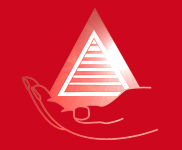This week we will give information on the legislation concerned with work equipment and machinery.
Every year, there are a number of accidents from using work equipment, including machinery. Many are serious and some are fatal.
This article gives simple, practical advice on what you can do to eliminate or reduce the risks from work equipment. It summarises the main requirements of the Provision and Use of Work Equipment Regulations.
We also have 2 recent HSE cases for you to look at and learn from:
- A distillery in Oldbury has been fined after an employee was engulfed in flames in a fire that destroyed the warehouse and its contents. The 21-year-old sustained twenty percent burns to his head, neck and hands.
- A Bulgarian construction firm has been fined after a member of the public reported unsafe working practices during the construction of an adventure course in Markeaton Park, Derby.
As ever, if you have a subject that you would like us to cover one week, please contact us by phone 01458 253682, email or via ourFacebook page or by Twitter
We have also added a film highlighting the dangers of texting whilst driving.
Only a couple of days ago I witnessed somebody, a woman I would think in her 30s, texting whilst at the wheel of her car!! So if you, or somebody you know, are guilty of texting whilst driving watch this film. It is hard hitting but oh so true!
Work Equipment guidelines
Every year, there are a number of accidents from using work equipment, including machinery. Many are serious and some are fatal.
This leaflet explains what you, as an employer, may need to do to eliminate or reduce the risks from work equipment. It will also be useful to employees and their representatives.
It covers all workplaces and situations where the Health and Safety at Work etc. Act 1974 applies, including offshore installations. If you are an employer, a manager, a supervisor or hire out equipment for use in the workplace, this leaflet will help you understand what you can do to reduce the chances of an accident happening.
For some operations you will need more detailed information. If you wish to build, modify or add equipment (for example to a production line) you will probably need to seek advice from a competent engineer or equivalent person who is aware of the relevant European standards and requirements.
If you would like information on the law, or on other publications which give you more guidance on selection, protection measures and the safe use of particular types of machinery or other work equipment, see ‘Further information’.
What is work equipment?
‘Work equipment’ is almost any equipment used by a worker while at work including:
Who is responsible for work equipment?
Employers and those who have control over work equipment (e.g. those hiring out work equipment) have responsibilities for equipment provided for use at work.
What do I need to do?
Look at all the equipment in use, decide what can cause risks, and how. Consider what can be done to prevent or reduce these risks by asking yourself:
The following information may help you decide what to do.
What risks are there from using work equipment?
Many things can cause a risk, for example:
Identifying the risks
When identifying the risks, think about:
What can I do to reduce the risks?
- Use the right equipment for the job
- Many accidents happen because people have not chosen the right equipment for the work to be done. Controlling the risk often means planning ahead and ensuring that suitable equipment or machinery is available.
- Make sure machinery is safe
- You should check the machinery is suitable for the work – think about how and where it will be used.
All new machinery should be:
If you think that machinery you have bought is not safe DO NOT USE IT. Contact the manufacturer or supplier to discuss your concerns and if they are not helpful, contact HSE for advice.
Remember, it is your responsibility as an employer or a subcontractor to ensure you do not expose others to risk.
If you need further information please call us on 01458 253682 or send us an email.
Training Courses
Our next batch of courses will start in September after the holiday period.
These will include:
- Liability for Accidents and Ill Health at Work
- CDM Regulations 2015 – An Awareness Course
- SMSTS (Site Management Safety Training Scheme)
- Asbestos Awareness
- Treat Health the same as Safety
- Manual Handling
- First Aid
But remember we are still available for running ‘In House’ courses.
If you have any questions about these courses or any other training or would like us to run a particular course for you, call Jon Wilkins of the Wilkins Safety Group on 01458 253682 or email him.
We have got a Safety Awareness update ‘In House’ course booked for a local firm of Electricians in July and 2 ‘Mercury Spillage’ courses, again ‘In House’ booked for the National Trust in September. So if you would like a bespoke course run at your place of work, why not contact us to see what we can do?

Your business is safer in our hands
Finally for this week
Do you Text as you drive? Well watch this short film and think again!
This is a hard hitting 4 minute film that anyone who has been guilty of texting when driving, should watch!!

